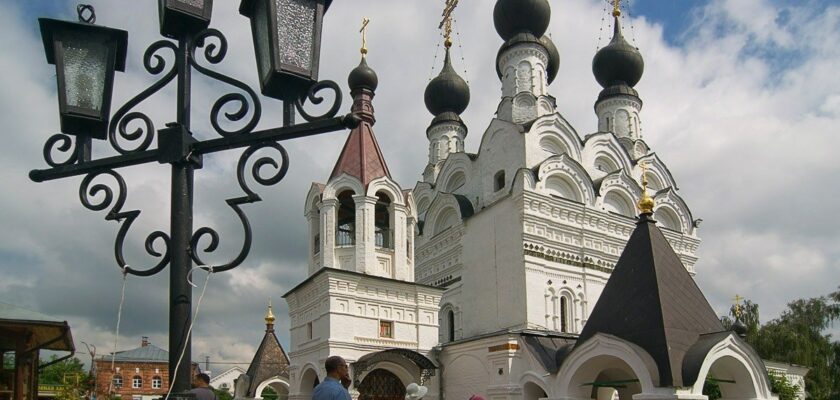Holy Trinity Convent
Holy Trinity Nunnery was erected in Murom, on the steep bank of the Oka River. Its magnificent architectural ensemble was created by Murom architects in the second half of the XVII century. Well-restored historical buildings of the monastery are one of the main attractions of the ancient city. The churches of the monastery are built in the style of Russian patterning and are characterized by rich decorations. There are few such remarkable monuments in Russia. Murom is conveniently connected with Moscow by railroad and bus communication. All year round, thousands of tourists arrive to admire the Trinity Monastery, taking home vivid impressions.
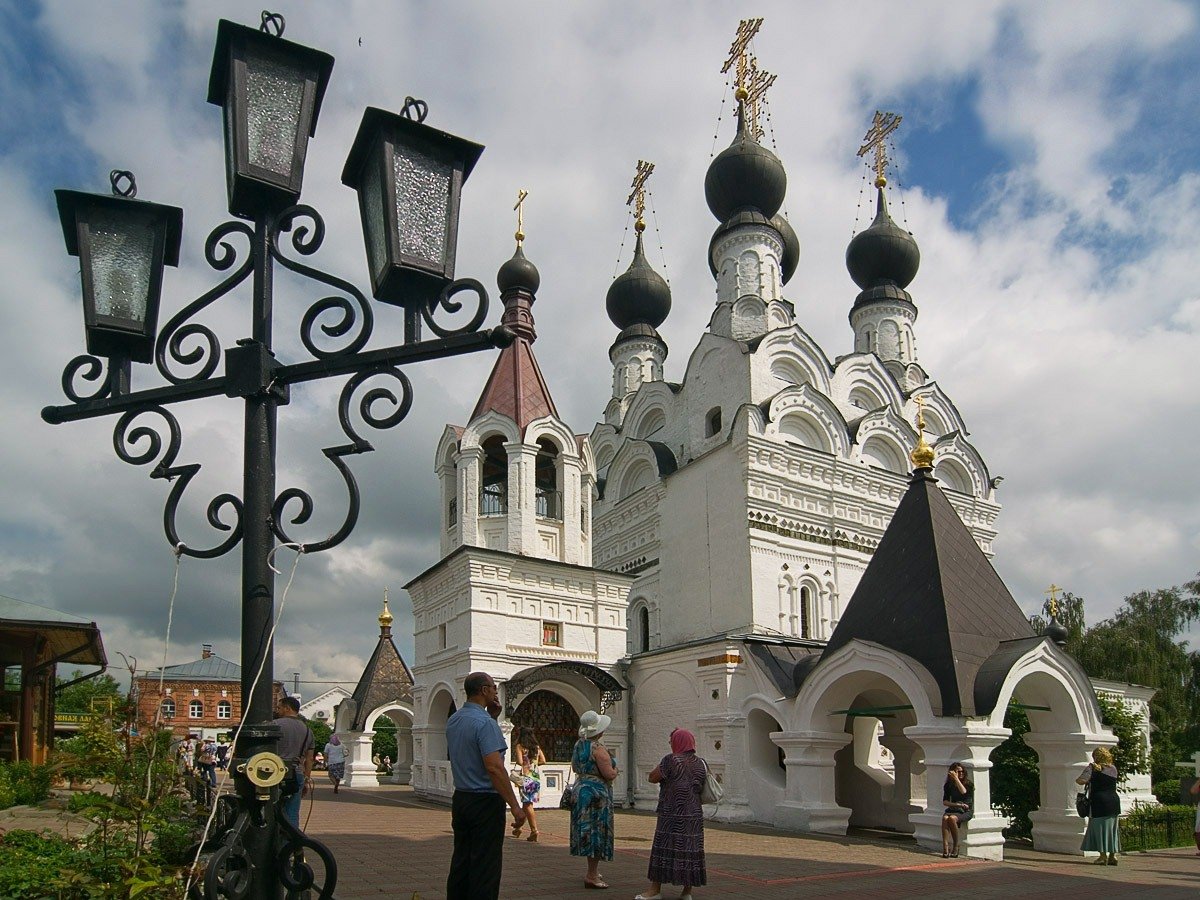
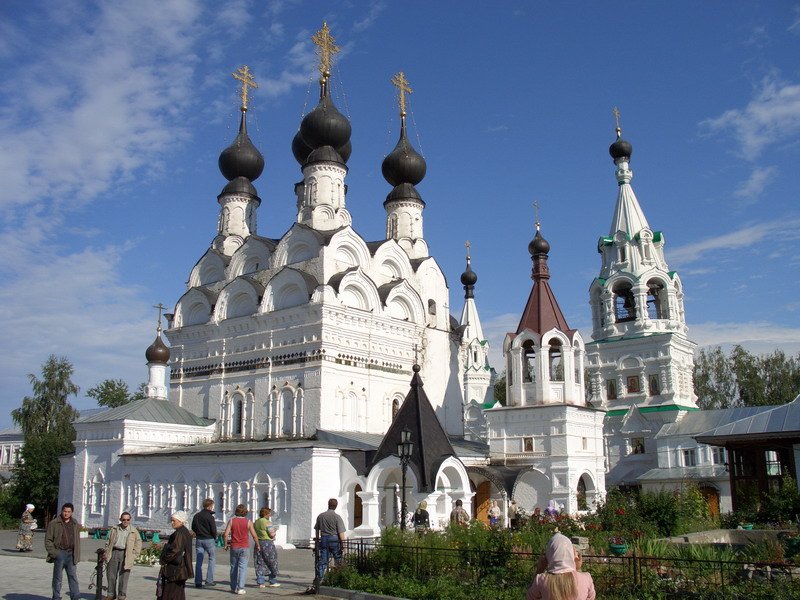

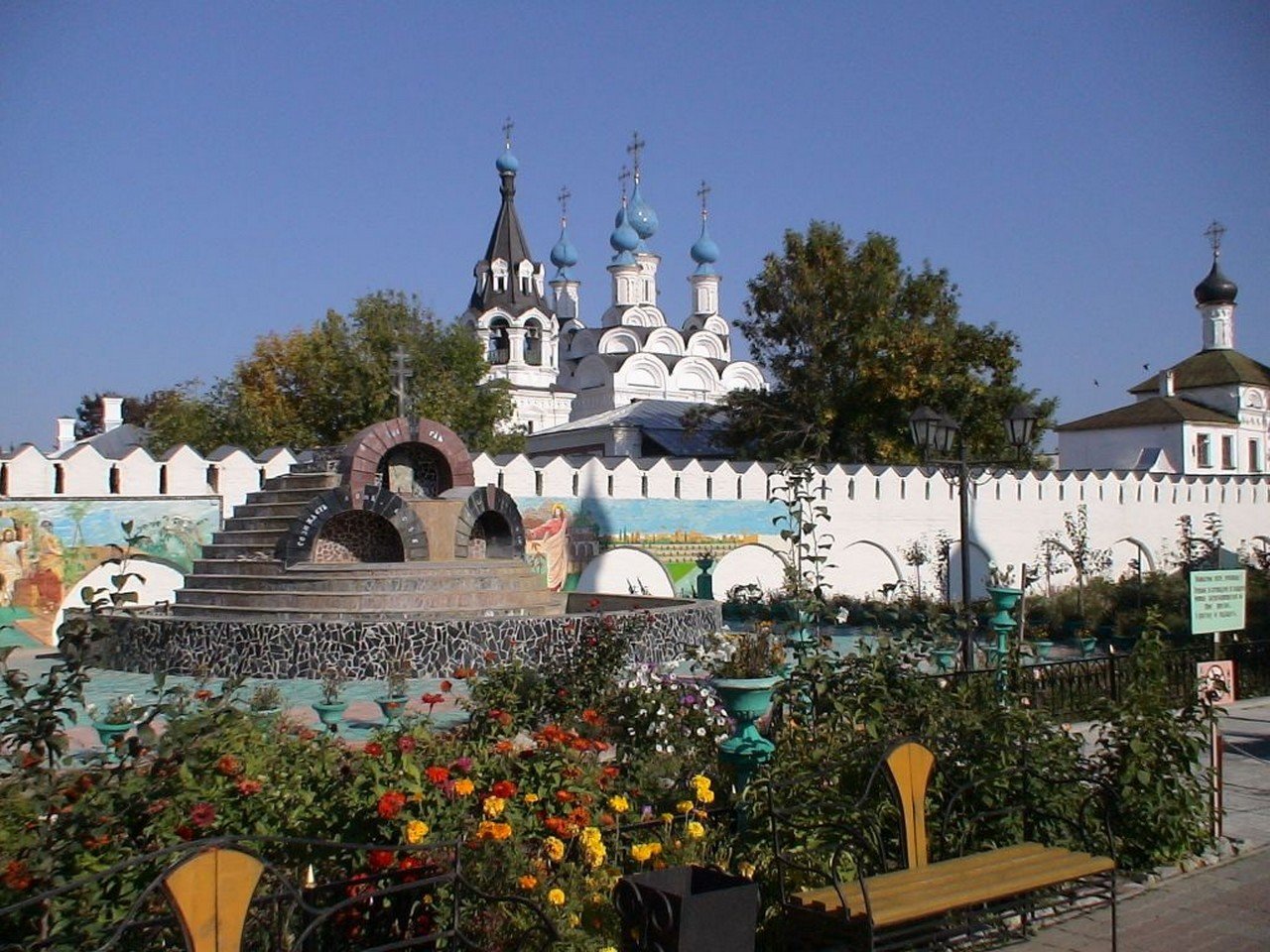
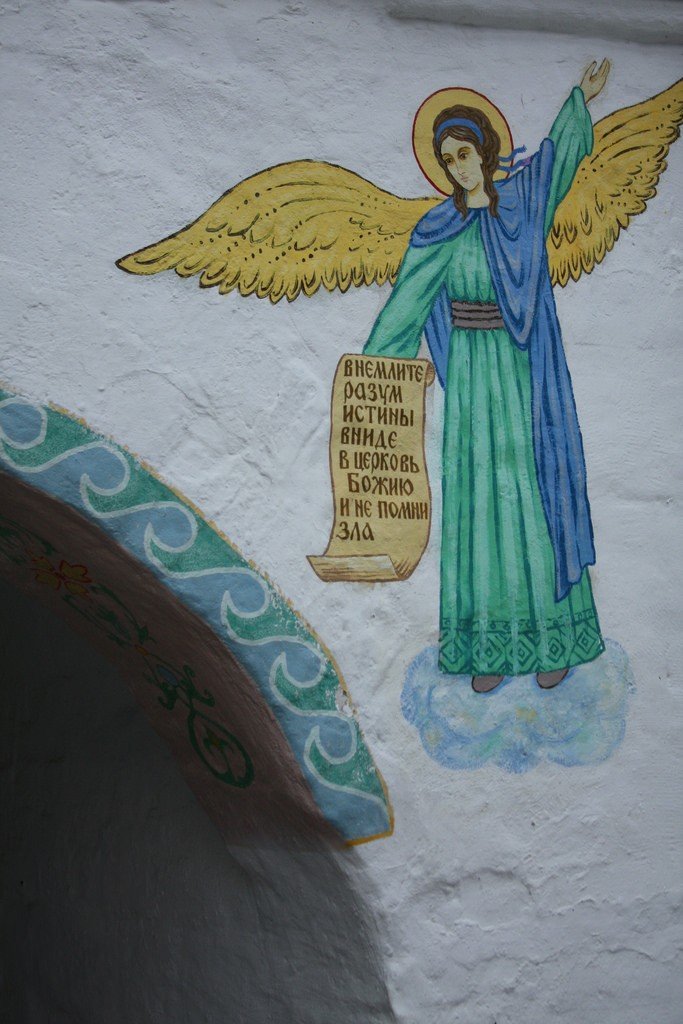
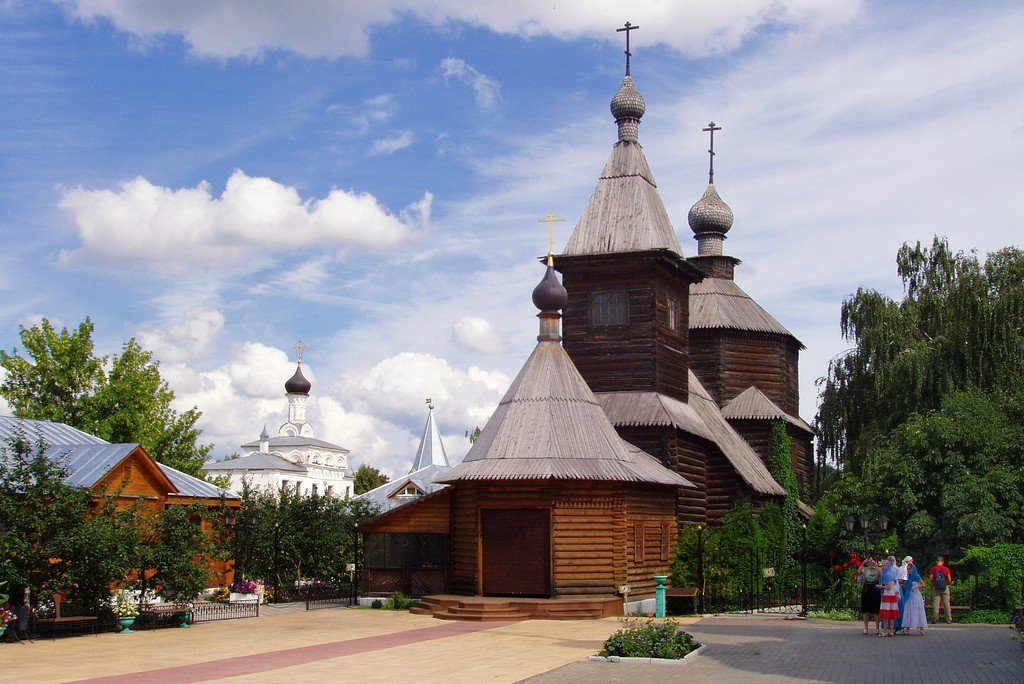
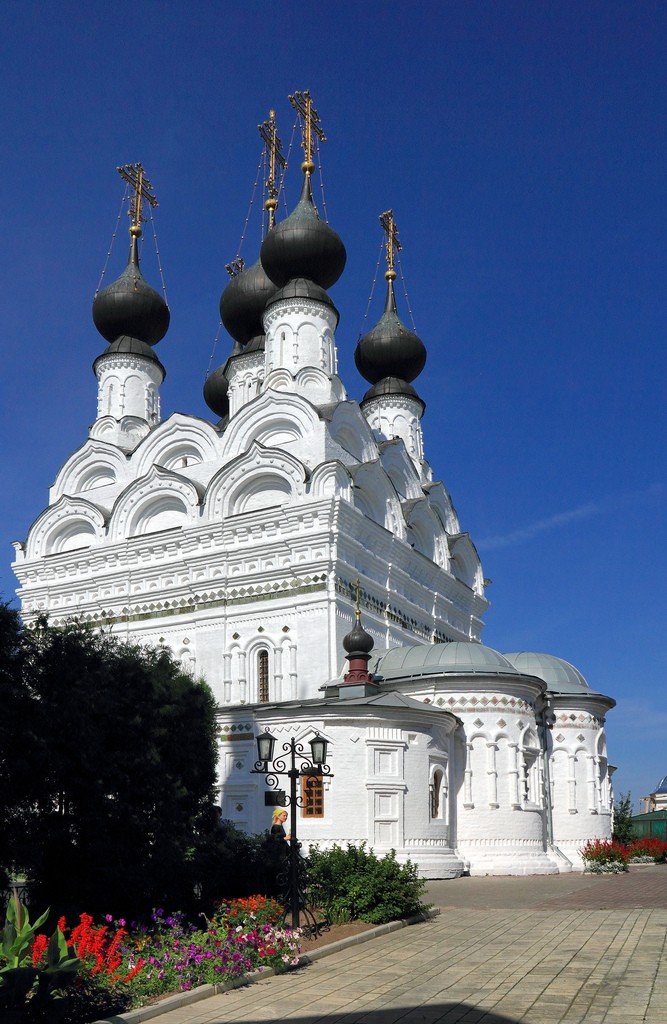
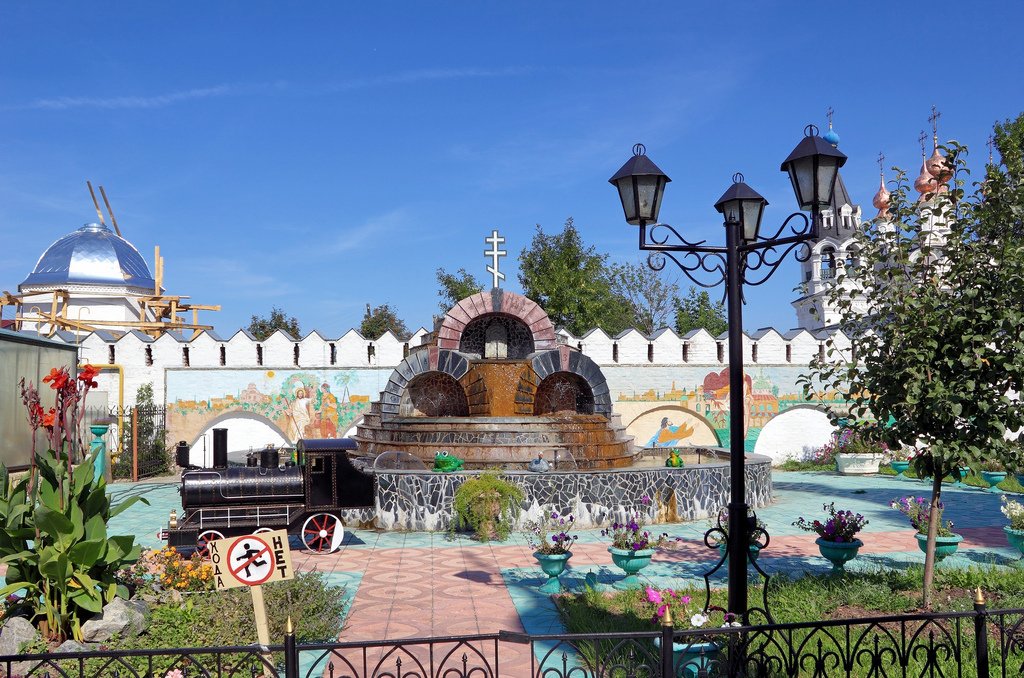
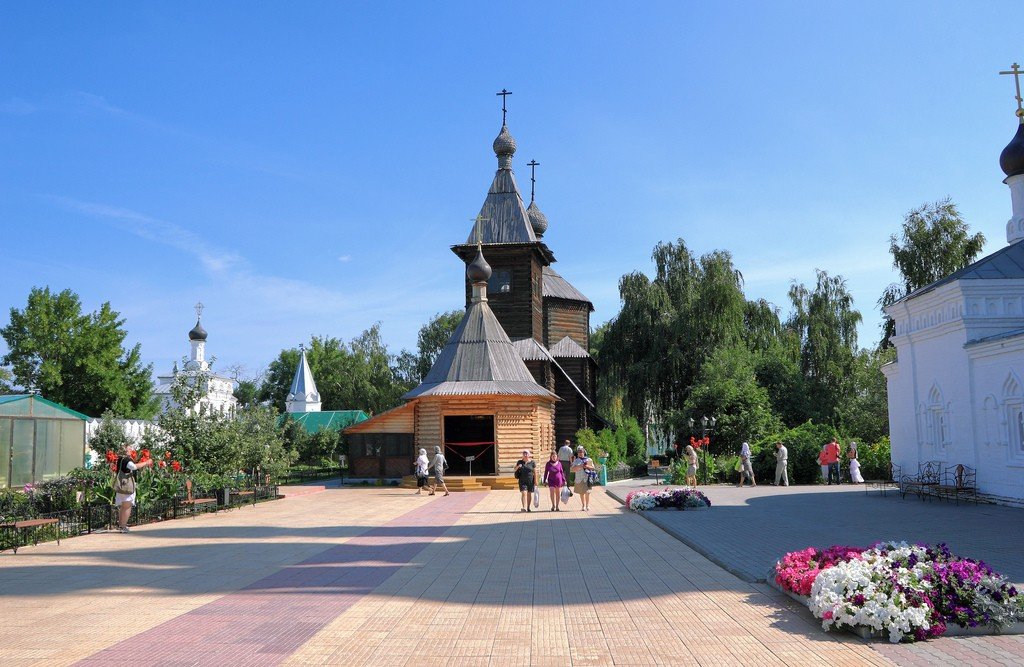
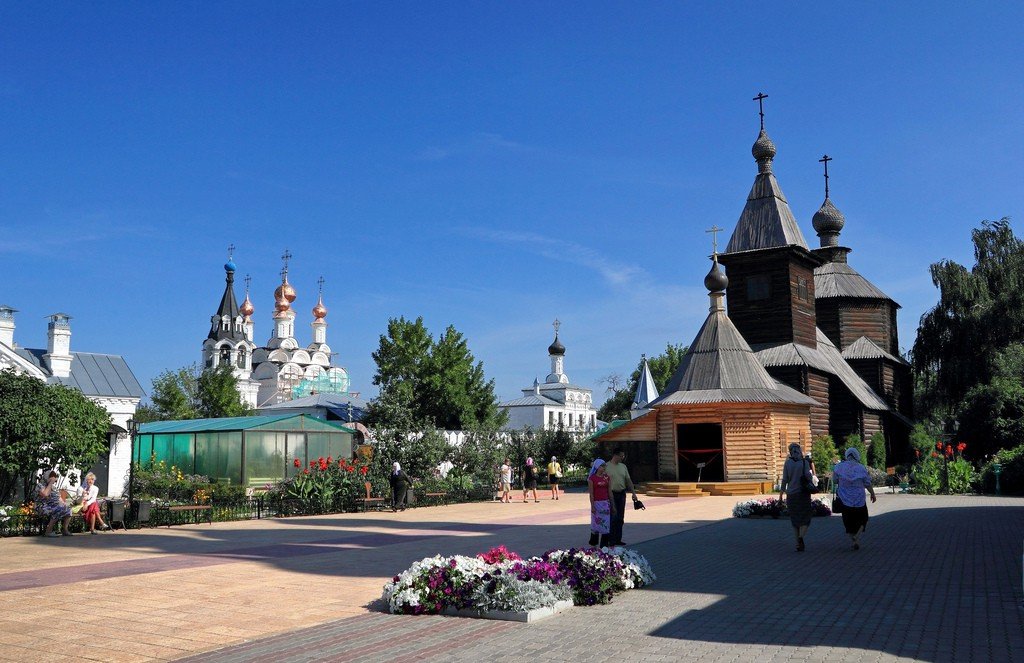
Video:
Contents- Highlights
- History of Holy Trinity Monastery
- A walk around the monastery
- Practical information
- How to get there
Highlights
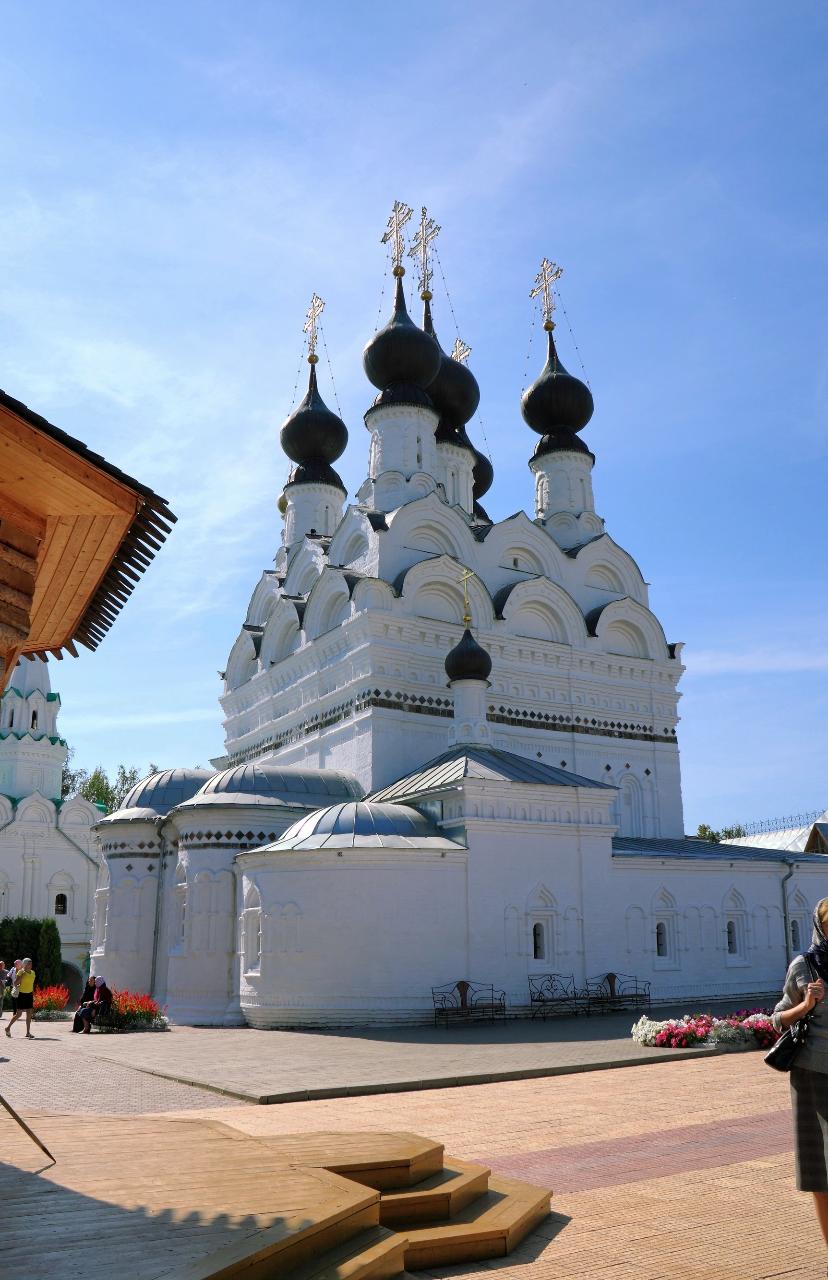
In the decoration of the facades of the buildings of the Holy Trinity Monastery have preserved the rarest elements of decoration – watered ceramic tiles with relief images. Noteworthy are the fine wrought iron crosses decorating the domes of the Trinity Cathedral, the gate church and the bell tower. They were created by Murom masters more than 380 years ago. The main cathedral of the Trinity Monastery houses the remains of the legendary couple who ruled in Murom in the XIII century – Prince Peter and the kind-hearted healer princess Fevronia. Nuns and now observe the traditions of mercy: at the monastery opened a shelter for elderly invalids and orphans.
.History of Holy Trinity Monastery
In 1642 Murom philanthropist Tarasiy Tsvetnov donated a large sum for the construction of a new church in the city in the name of the Holy Trinity. This is recalled by a thankful inscription on the foundation stone in the basement of the structure. The brick five-domed cathedral was erected in place of the dismantled log Boris and Gleb church, which had stood on the bank of the Oka River since the Grand Ducal times. Soon the Holy Trinity Nunnery appeared near the cathedral walls, and the construction continued. Above the entrance appeared the Kazan gate church, to the west of it in 1652 rose a three-tiered bell tower with an octagonal hipped roof. All the buildings of the monastery are made in a single architectural style of Russian patterning.
.
In 1663, the Moscow Tsar Alexei Mikhailovich granted the Trinity Monastery several surrounding villages and extensive land plots. Freed from taxes by the tsar’s charter, the monastery prospered in the following centuries. The decree of Empress Catherine II on secularization did not affect Holy Trinity Monastery, but only increased the number of its nuns. Nuns from three abolished women’s monasteries of Murom uyezd were transferred here.
.
In 1805 in Holy Trinity Monastery there was a fire. Several cellular buildings and outbuildings were damaged, the wooden fence was burned. During the restoration work the monastery was surrounded by a beautiful brick wall with decorative teeth and corner turrets. During the XIX century the territory was decorated with several chapels, two-storied cells. A school for illiterate women was built behind the monastery wall. By the beginning of the XX century its classes were attended by 140 female students.
.
After the October coup of 1917, the monastery was closed. For several decades in the good cellular buildings housed apartments, workshops, warehouses. Only in the 70s of the last century the complex of buildings of the monastery was recognized as a monument of history and architecture. Residents were evicted, restorers started to work. During this period, the ensemble was enriched with the wooden church of St. Sergius of Radonezh, transported from the ancient village of Pyangus. The temple was built in 1715.
.In May 1991, the monastic ministry resumed in Holy Trinity Monastery. From the local museum in the temples transferred icons, liturgical utensils, as well as a frame with the remains of St. Peter and St. Fevronia. According to church legend, the legendary spouses died on the same day – June 25, 1228. In the birch grove at the entrance to the monastery in 2012 was opened a bronze monument to Peter and Fevronia by famous Moscow sculptor Vladimir Surovtsev.
.A walk around the monastery
The front Holy Gates leading to the Holy Trinity Monastery face southeast. Above them is built an over-the-gate church in the name of the icon of the Mother of God of Kazan. A little to the left above the whitewashed brick wall rises a hipped bell tower. Its upper tier is supported by graceful columns, giving the impression that the high roof is floating in the air.
.
It would seem that the architects of the XVII century put all their skills into the rich decor of the bell tower. But in Holy Trinity Monastery there is a structure that surpasses the belfry abundance of decorative elements. It is the magnificent Trinity Cathedral, whose facades are a kind of stone encyclopedia of the whole variety of the architectural palette of Russian patterning.
.
Nowadays you can see that the 5 metal domes of the Trinity Cathedral are painted with modest gray paint. Only the central chapter is decorated with golden stars. But from the description of 1766 it is known that originally the chapters were covered with muravlenoy green tiles, brightly sparkling in the sun. The domes were rebuilt after the fire that engulfed the cathedral in the early XIX century. However, the chapters are crowned with fire-preserved wrought gilded crosses created by Murom blacksmiths in the middle of the XVII century. The top of the highest cross, which is above the central dome, is decorated with a skillfully forged silhouette of a sailing ship. This is probably a hint to the merchant activities of the founder of Holy Trinity Cathedral Tarasiy Tsvetnov, who delivered goods to Murom on the Oka River.
.
On the whitewashed facade of the temple eaves highlighted pediment, decorated with two rows of rectangular tiles with dark green glaze. The ceramic tiles show relief plant ornaments, images of armed horsemen, double-headed eagles, mythical animals. Window cocoshniks, altar apse are decorated with tiles.
.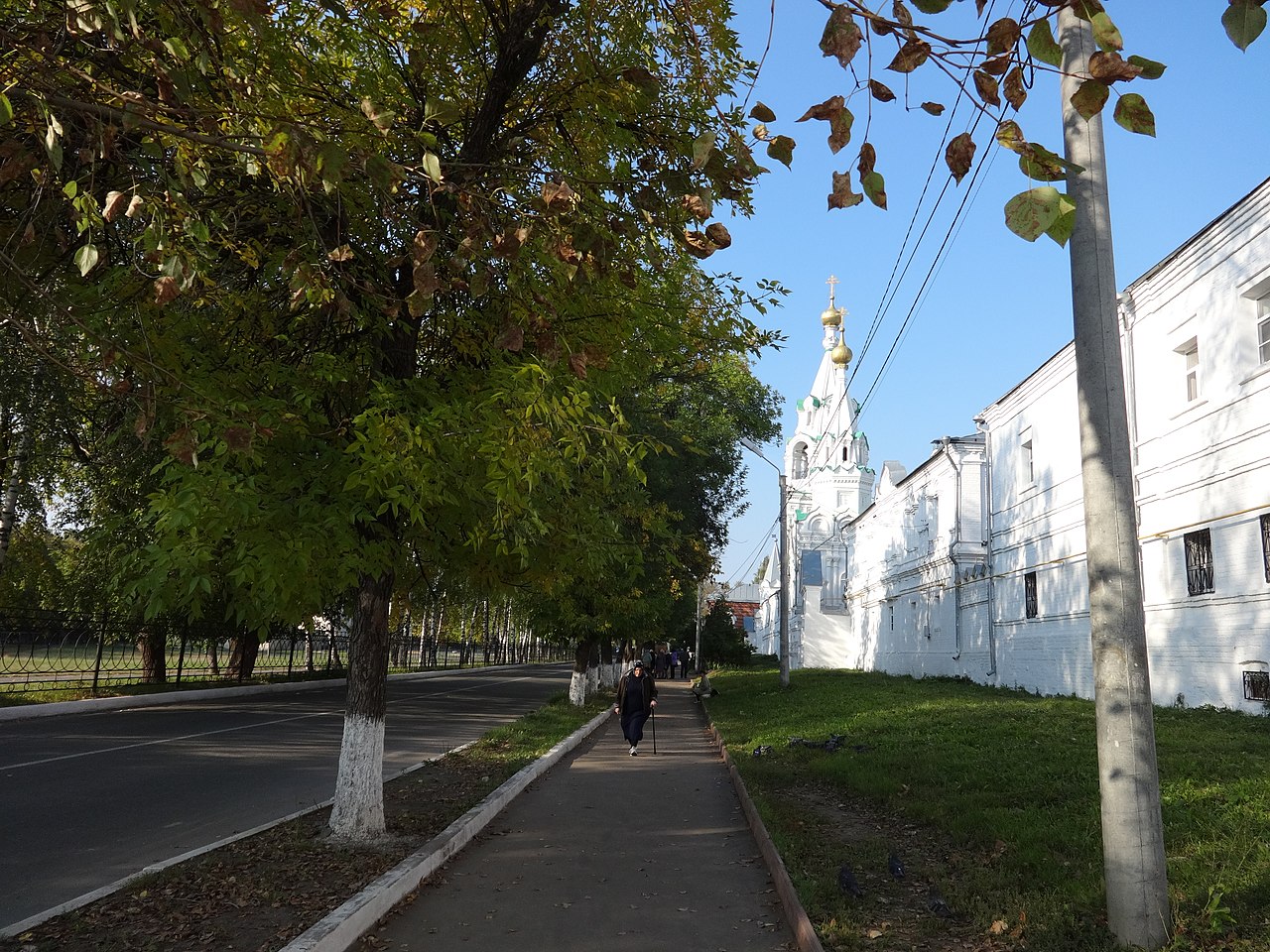

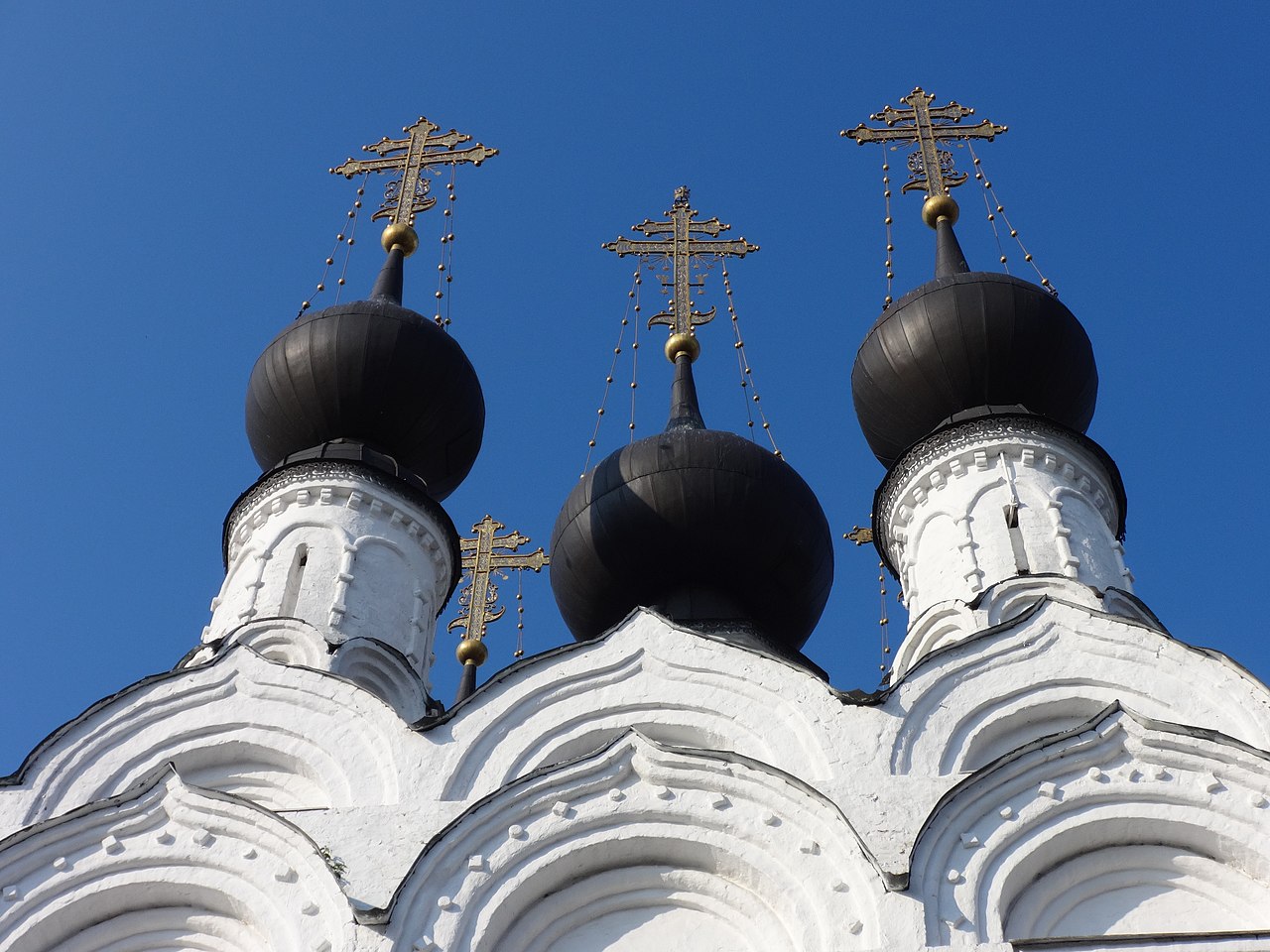
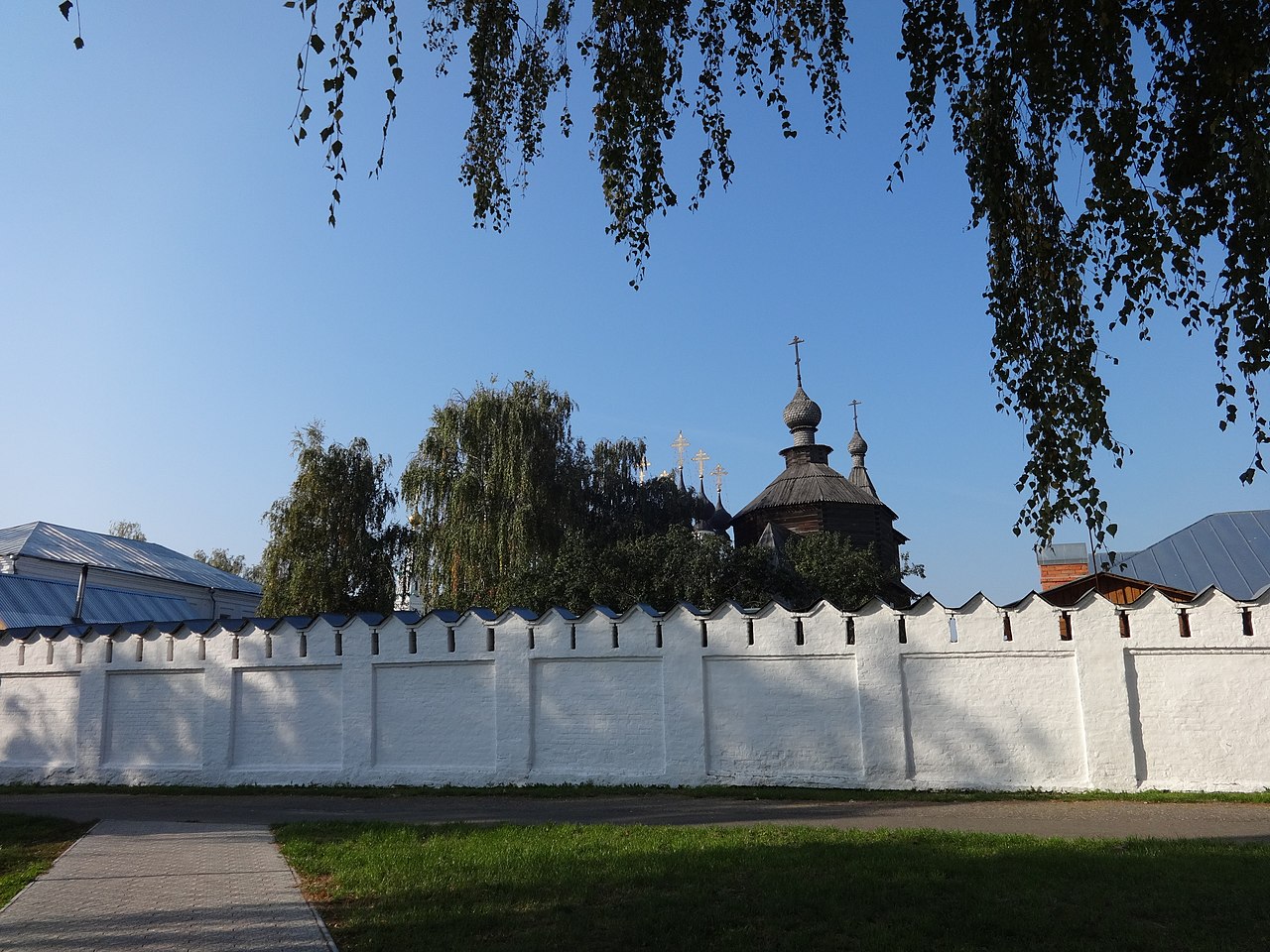
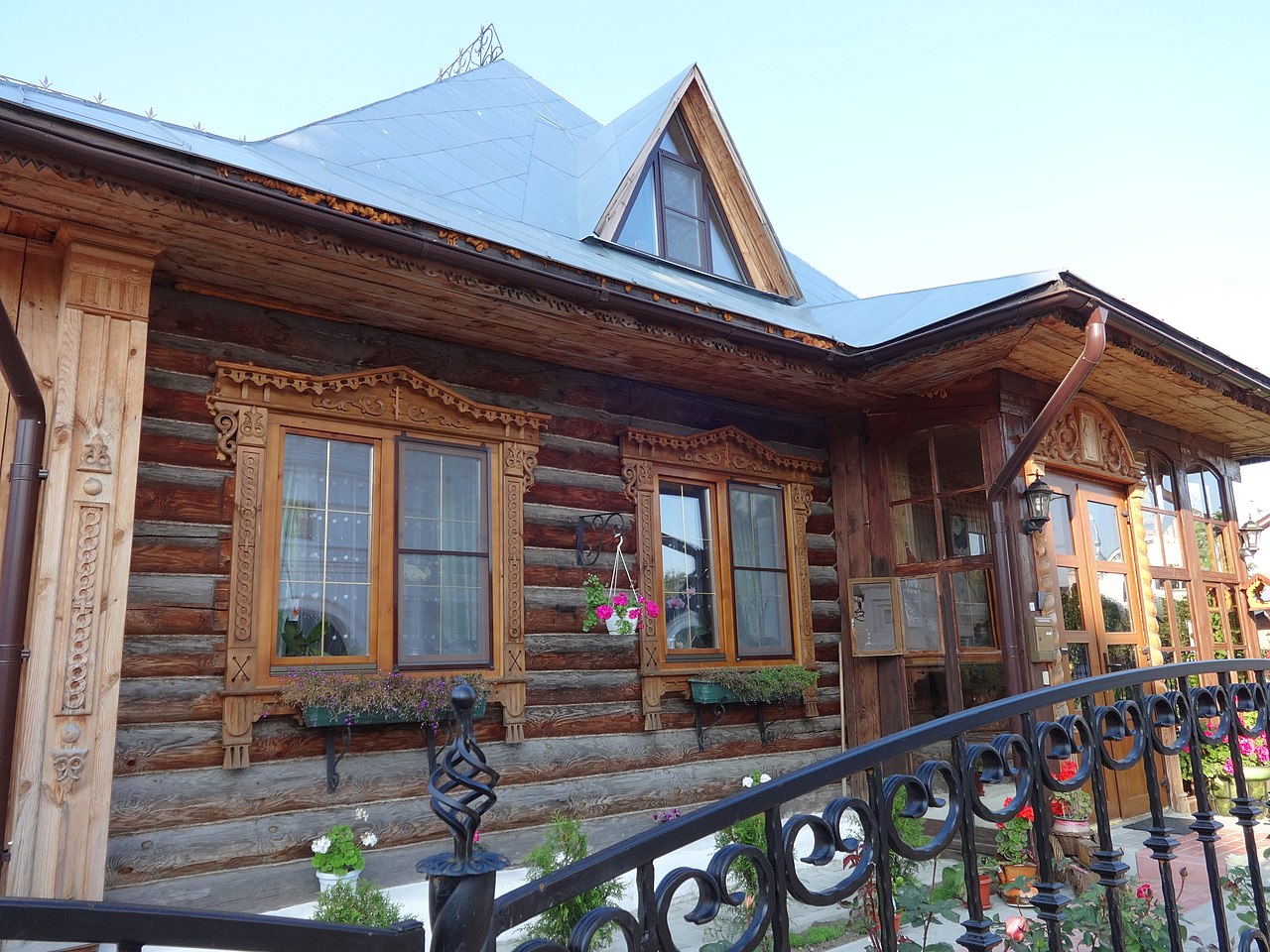
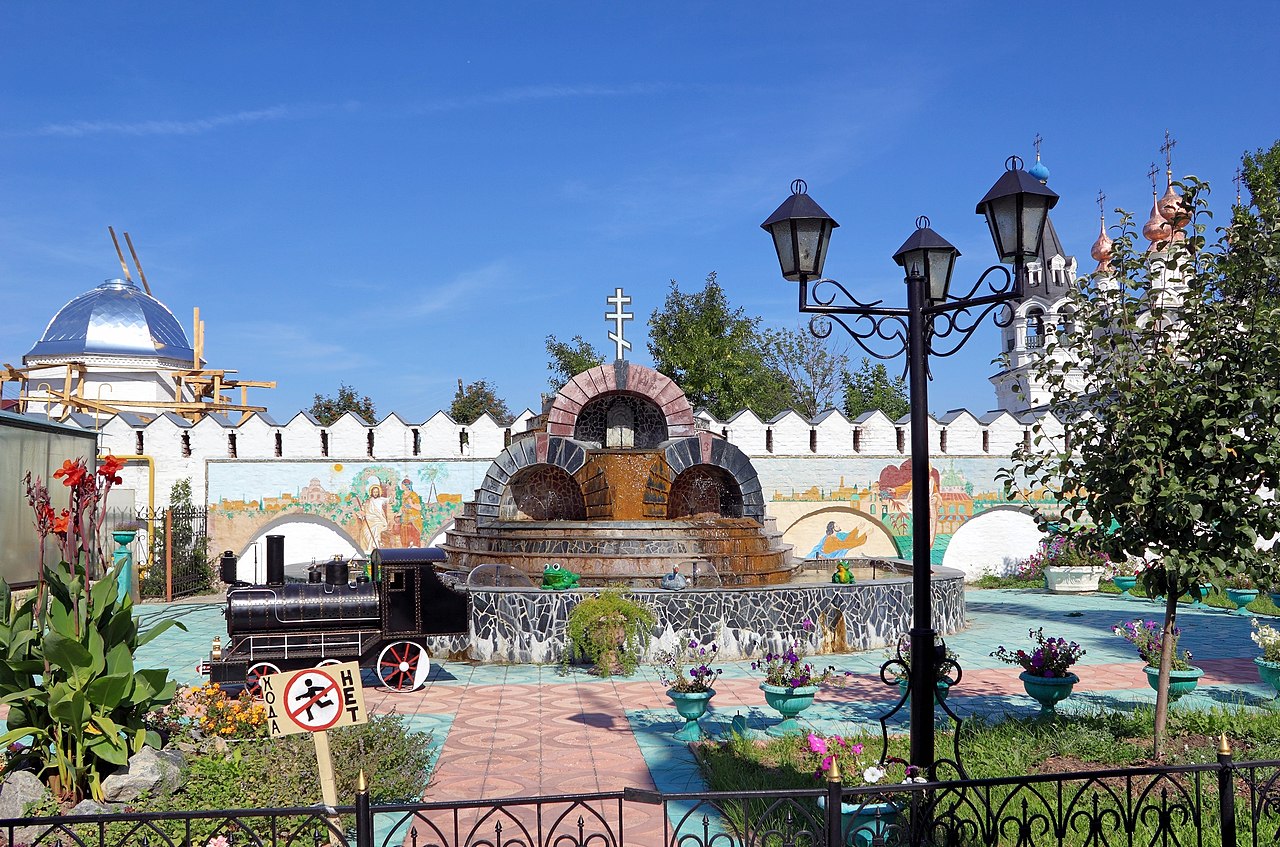
The main shrine of the ancient cathedral is the tomb of Blessed Peter and Fevronia. The silver Vilna cross, brought in the XVII century from the city of Vilna (modern Vilnius), is also especially revered. In the cavities of the cross-casket are kept particles of relics of 35 Christian saints. By the way, a curious history of this relic was recorded by the very Tarasiy Tsvetnov, who built the cathedral. On the slope of years, the benefactor took monastic tonsure in the male Annunciation Monastery, located in Murom.
.In front of the southern facade of the cathedral is a small monastery pogost. To the right is dug a miniature pond surrounded by an orchard. On the left hand is the building with the apartments of the abbess. The nuns of the monastery live in two-story cell blocks attached to the fence.
.
In the eastern part of the Holy Trinity Monastery is erected refectory. Opposite is the log church of St. Sergius of Radonezh, built before the foundation of the monastery in one of the surrounding villages. In the 1970s restorers dismantled the ancient church and moved it here. At the farmyard in 2000 was built over the cloister chapel with an altar of St. Peter and St. Fevronia. Pilgrims put a memorial candle on the altar, draw from the source of consecrated water. It is said that girls who prayed here to St. Fevronia will soon find their soulmate. Nearby there is a church shop, where you can buy commemorative crosses, icons, Christian literature..
Part of the territory of the monastery is fenced, there are emergency construction works. In April 2021, an extended segment of the eastern wall collapsed. This section of the fence had long required repair: the ground beneath the 1807 foundations had sagged from groundwater and the wall had tilted dangerously. To restore the fence, it was decided to use the same old brick, having first cleaned it from lime mortar. The work will be completed in 2022.
.Practical information
The gates of the Trinity Monastery are open to visitors from 06:30 am, at which time the liturgy begins. Access of tourists stops at the end of evening prayer.
A stone’s throw from the Holy Trinity Monastery are two more monasteries – the Annunciation Monastery and the Resurrection Monastery. To the south spreads the Oka Park, from where you can walk to the embankment of the river. Here you can have a snack in the cafe “El Caramelo”. Nearby there is a historical and art museum, several historical estates. Behind the park you can see the domes of the churches of the Spasskaya monastery, which is also worth visiting.
.How to get there
From Moscow to Murom is most convenient for tourists to get from the Kazansky railway station on long-distance trains stopping in this city. The early train 072G “Moscow – Cheboksary” departs at 04:56 and arrives at Murom-1 station in 4 hrs. 46 м. Tickets will cost from 602 to 1399 rubles. During the day from the same station depart and other trains going to Yoshkar-Ola, Chelyabinsk, Ulan-Ude, Cheboksary, Kazan, Barnaul.
.From Shchelkovsky bus station twice a day to Murom there are buses. The journey will take a little over 7 hours, the cost of a ticket – 965 rubles.
.
Moscow motorists should take the M7 highway leading to the east, through Balashikha and Noginsk. Behind Koloksha, which is before Vladimir, according to the signs turn to the highway P72. After reaching the center of Murom, go along Moskovskaya Street, it will lead to the goal of the trip. The total distance by highway is 310 km, the trip will take about 5 h. 30 min. The address of the Trinity Monastery in Murom is 3-A Peasant Square.
.